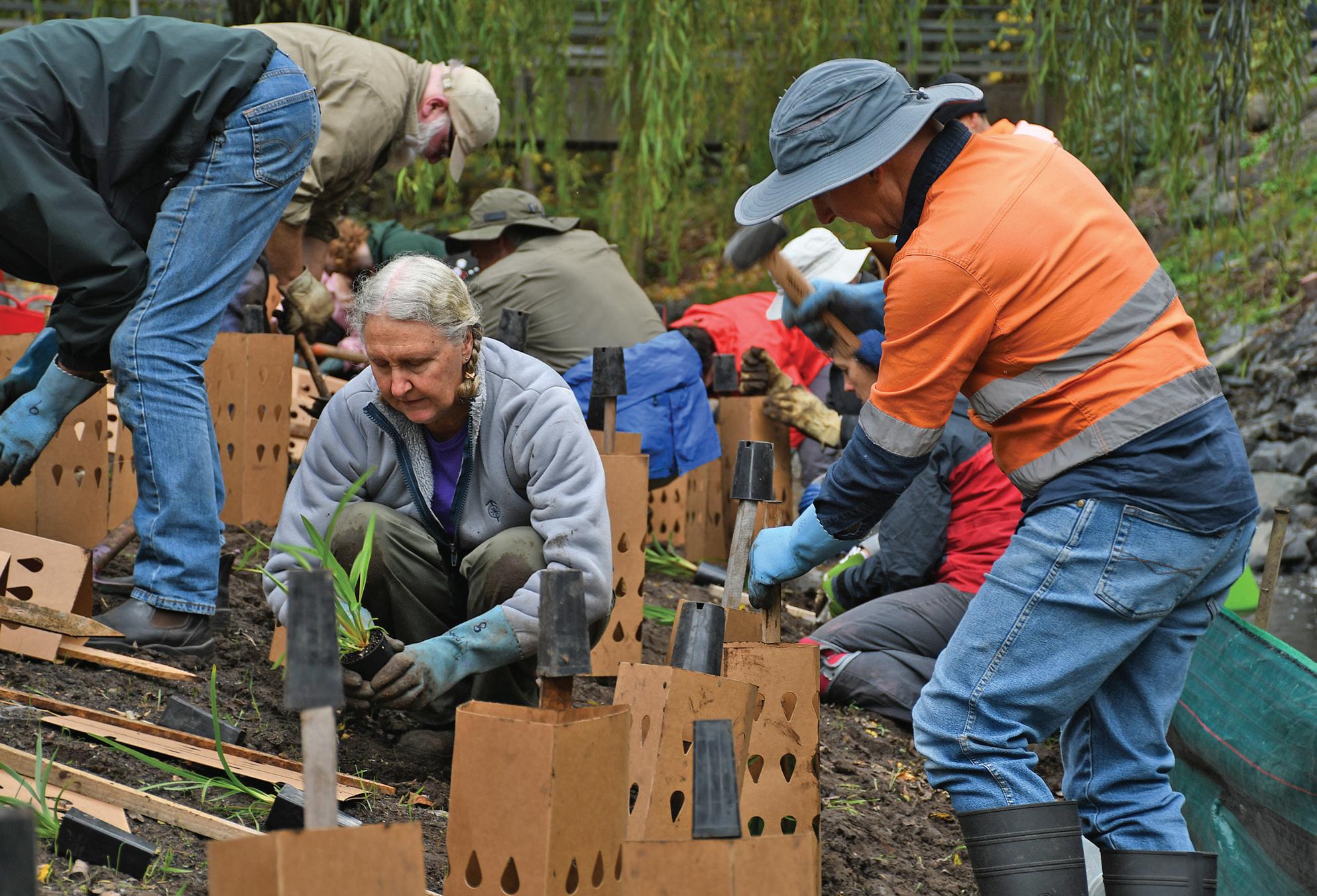
5 minute read
Caring for platypus country
When John James and his wife Julie made the move from Queensland to Hobart in May 2020 they found a very special home looking out over the Hobart Rivulet.
They loved being able to follow the rivulet all the way into the city, or head uphill to the Cascade Brewery.
But coming from a farming background John couldn’t ignore the number of weeds taking hold along one of Hobart’s favourite waterways.
“I saw spear thistles happily flowering and spreading their seeds far and wide, and blackberries throwing their arching canes in all directions to expand their thickets,” he says.
“I joined the South Hobart Bushcare group as a volunteer, and after seeing the great work Janet Stone was doing with that group decided to gauge the level of local interest in forming a similar group focusing on the Hobart Rivulet.”
When around 100 volunteers turned up to plant over 1500 native grasses, shrubs and trees upstream of the MacFarlane Street bridge, it was clear there was enormous community interest in improving the health of the waterway and Hobart Rivulet Bushcare was born.
“It’s now two years on and our numbers have grown to almost 100 on our mailing list, with 10 to 20 attending our monthly working bees,” says John.
“We emphasise that you don’t have to come to every working bee, but just when you’re able. We meet on the second Sunday of most months at 2 pm, and finish with a cuppa by 4.30 pm.”
The group has planted almost 2500 native grasses, shrubs and trees along the Hobart Rivulet, and removed piles of weeds.
“You’ll be hard-pressed to see spear thistle flowers these days,” says John.
“If we see plastic or other rubbish that is safe to remove, we bag it up and take it away. I’m delighted with the difference we’re making to the natural environment and home of our iconic platypuses.”
The Hobart Rivulet runs all the way from the upper reaches of kunanyi/Mt Wellington down through South Hobart, under the CBD and out into the River Derwent.
Hobart Rivulet Bushcare is focusing its efforts on the middle section, from Cascade Brewery down to Wynyard Street, but hopes to expand its reach over time.
The group has attracted a strong following of committed volunteers.
“They seem to be the type of people who are willing to roll their sleeves up and pitch in to give a hand to improving the natural environment,” says John.
“We’re a bit like liquorice allsorts – we have uni students, engineers, biologists, statisticians and various retired folk. Some of them volunteer at several Bushcare groups across Hobart, which is testament to their enthusiasm.
“But we’re always looking for more people to lend a hand. Joining Bushcare gives people an opportunity to meet some neighbours and learn about bush regeneration. Indeed, as a new member of the community, I’ve found it a great way to meet some of my neighbours and feel part of the community.”
And of course, the big payoff for living and working along the Hobart Rivulet is seeing platypus in your own backyard.
“I love seeing platypuses,” says John. “I’ll often get to see one as I walk along the rivulet track, particularly at dawn and dusk. Mind you, I’ve seen them at midday too, so it’s always worthwhile keeping an eye out for them.
“And every time I visit the lovely Bear With Me café, I get to see the platypus mural on their outside wall. That was a crowd-funded artwork and just goes to show how much the South Hobart folk love their platypuses.
“I’d like to see more artwork and interpretation signage along the rivulet to acknowledge the presence of these wonderful animals. As I walk along the rivulet path, I’m often asked by visitors where they can see the platypus, so their fame is spreading.
“What other capital city has platypuses within walking distance of the CBD? Hobart is such a fabulous place to live.”
Weed Watch: Action on willows
The City of Hobart has secured more than half a million dollars in federal funding to remove invasive willows from Hobart’s rivulets, which will go a long way towards reducing flood risks and will also help improve environmental outcomes for our inland waterways.
This is good news for residents living along our beautiful rivulets, and for the platypuses and other aquatic wildlife that call our rivulets home.
The funding was secured through the Australian Government’s Disaster Ready Fund and welcomed by our City Water Portfolio Chair Ben Lohberger, who said there will be many associated benefits to this project.
The ultimate goal of our willow removal project is to reduce the risk of flooding in all affected catchment areas across the City of Hobart.





